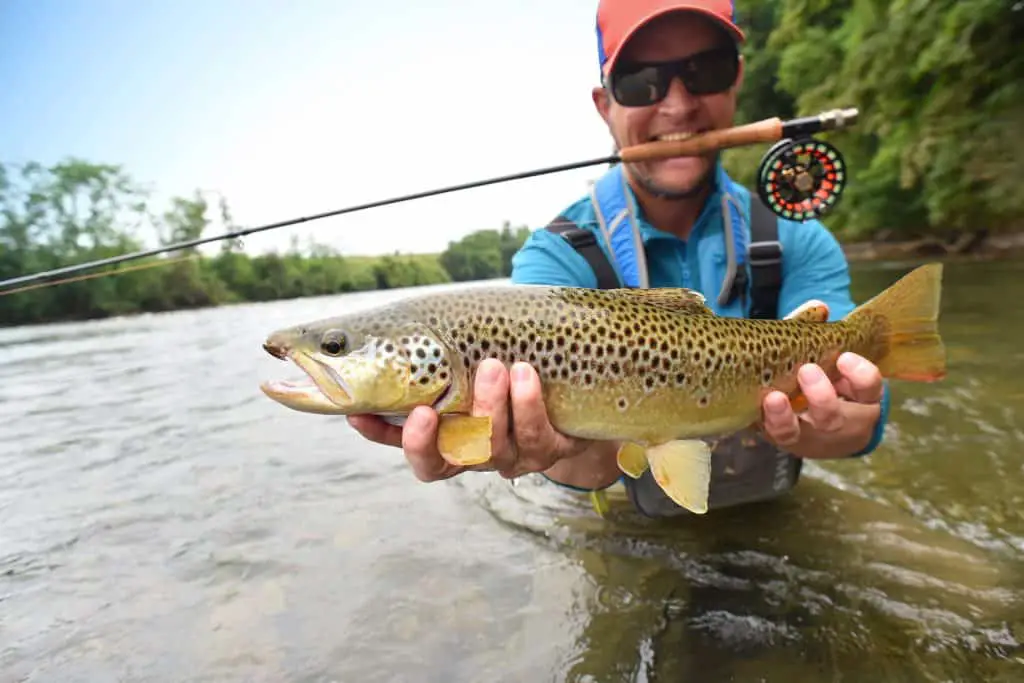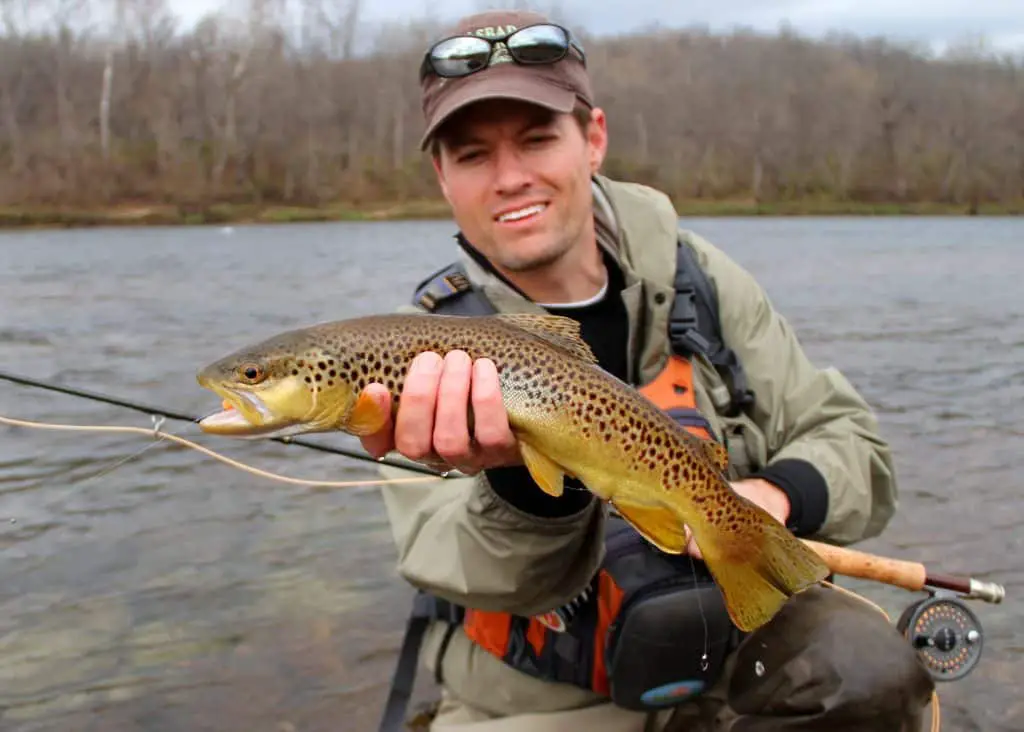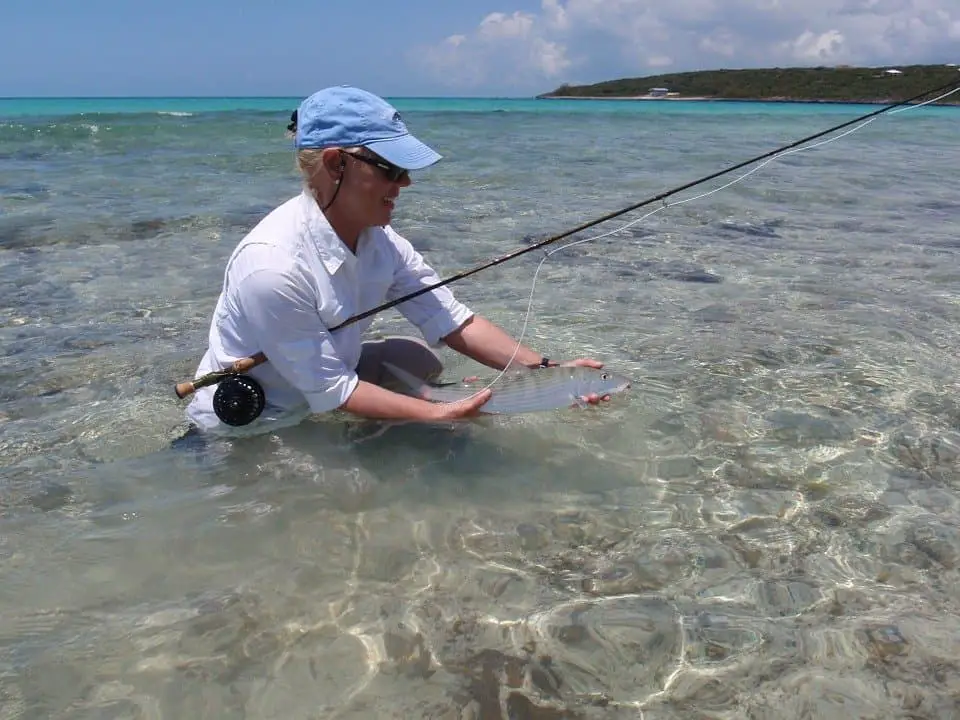As an Amazon Associate we earn from qualifying purchases.
The history of fishing is parallel to the history of mankind. Fishing was a source of survival for humans for tens of thousands of years, before turning into a recreational endeavor and industry powerhouse. Fly fishing is a much younger sport, however, when compared to the history of subsistence fishing, which helped form civilization as we know it.
But who exactly were the first fly fishers in history, and where did fly fishing originate? Much of the answer depends on your definition of fly fishing.
Table of Contents
The First Mention of Fly Fishing
It’s generally agreed upon by fishing historians that the first reference to fly fishing comes from the second century. Roman author Claudius Aelianus described the Macedonians as building what we would now call flies by attaching specific chicken feathers and wool to hooks.
“…they have planned a snare for the fish, and get the better of them by their fisherman’s craft. . . . They fasten red wool. . . round a hook, and fit on to the wool two feathers which grow under a cock’s wattles, and which in color are like wax.
Their rod is six feet long, and their line is the same length. Then they throw their snare, and the fish, attracted and maddened by the color, comes straight at it, thinking from the pretty sight to gain a dainty mouthful; when, however, it opens its jaws, it is caught by the hook, and enjoys a bitter repast, a captive.”
An earlier, more abstract reference to fishing with flies can be dated several hundred years before Claudius. Roman poet Marcus Valerius Martialis, who lived between 41 and 104 A.D. is quoted with “Who has not seen the scarus rise, decoyed and killed by fraudulent flies?” Fly experts do not agree on whether this is a direct reference to fly fishing, however, particularly because the scarus is a species of parrot fish. Not exactly a species known for sipping dry flies.
Macedonia certainly could be the birthplace of the hand made fly, but most artificial fishing lures would have been made from daily items you could find at home. Without casting a weighted fly line, was this really the first form of fly fishing?
Tenkara in Japan
Tenkara fly fishing is said to date back over 400 years ago in the mountain streams of Japan. The simple system utilized a pole a line and fly only. Japanese anglers used this style rod, usually with a bamboo pole for the rod, in high mountain streams and would sell their catch to local inns and markets.
Tenkara style fishing, while unique to region and country, is not necessarily a unique form of fishing. Fishing with a rod, and not just a handline, would look like this form anywhere in the world at this time. The first fishing reels were, most likely, solely in China, where the first recorded reels appeared in paintings dating back to the 1100s. Even if reel technology did escape into other countries, the Tenkara form of fishing would still be much cheaper and more widespread.
England Elites Make Their Mark
The U.K. is probably most credited with giving rise to the term fly fishing and its popularity as a sport. First references to fly fishing in the U.K. occur in the late 15th century in the book The Treatyse of Fishing with an Angle.
The book came out in 1496 and does mention using several different types of artificial flies, along with musings on how to create each fly and fish them. Anglers would still no doubt be using thin lines with no reels. Some dispute the authenticity of the author of the piece, Juliana Berners, but regardless the book mentions specific conditions and flies to use by month to catch trout and grayling.
Berners is believed to be a wealthy noble, which would explain her knowledge of a hobby, as noble’s would likely be the only people at the time who had time for such endeavors.
The book also mentions avoiding windy, or rainy days, which leads one to believe there were still no weighted lines and anglers would be using line roughly twice as long as their rod itself.
Anglers would most likely be lifting and dropping their lines, or if gifted with the proper wind, they could let the breeze take their fly and drop it into the appropriate place.
It wasn’t until the 18th century, and the widespread use of the printing press, that the book, The Art of Angling met the public. The book was written by Richard Bowlker, and features some of the most comprehensive fishing techniques and fly patterns for the era.
Reels were also gaining in popularity, which allowed anglers to catch larger fish, like salmon and guides were also applied to simple rods. Along with mechanical reels, anglers began experimenting with tapered lines, as well.
The tapered fly lines were developed and became the standard as line material made a switch from horse hair to Spanish silkworm silk and hair/silk combos.
Less than 100 years after The Art of Angling came to be, another book called The Fly Fisher’s Entomology introduced anglers to insect classifications and came complete with illustrations. Fly anglers could now attempt to match the hatch according to the seasons and insect species. This was also the first time fly fishing was officially used in the title of a book.
As the sport gained in popularity, different tactics and sects developed. Downstream casting, dry fly only and wet fly only schools of thought argued over one another regarding the purest form of fishing.
Fly angling would go on and progress from England and travel across the pond to the U.S after that.
Closing Statement on the Origins of Fly Fishing
Where fly fishing originated is an arguable debate, which depends on your definitions and personal fishing standards.
The origin, while interesting, may be a moot point, however. The inarguable importance of fly fishing is its future.
We as everyday anglers have a responsibility to grow our sport, keeping the tradition alive and conserving the fish species that have driven our passions and the success of the human race.
Amazon and the Amazon logo are trademarks of Amazon.com, Inc, or its affiliates.



